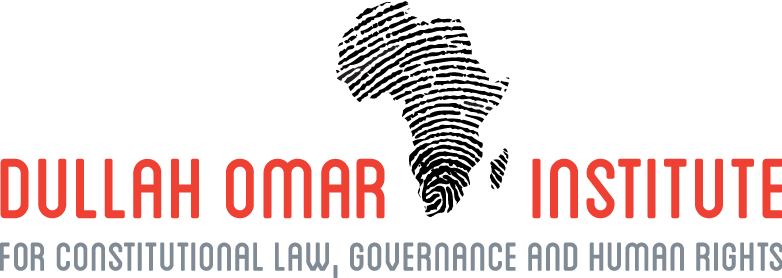Women as candidates in Local Government Elections: What can we learn from the past?
The electoral system at the local government level
The Constitution makes provision for two electoral systems at the local level: one in which the election of councillors is through proportional representation (PR), and another in which there is a combination of PR and direct ‘ward vote’ - called the constituency system. Currently, South Africa uses a combination of PR and ward votes. In the case of PR, each party is required to draw up a ‘party list’, which indicates the political parties’ candidates in order of preference. The percentage of votes obtained in the election determines the corresponding allocation of seats in the municipal council (on the PR vote). The order of names on the party list determines who gets a seat. In the case of wards, the candidate with the highest number of votes gets the seat (i.e. direct vote). In ward elections, candidates are elected in their individual capacity within their respective wards and therefore, need not belong to a political party.
Women Representation: What do the numbers say?
According to the Commission for Gender Equality, the number of women candidates in local government elections has increased significantly since 1995 in all provinces except Gauteng. However, when it comes to elections into local government, there is room for improvement. Three provinces passed the 50 percent women representation mark in PR elections in 2016 (Eastern Cape, 53 percent; Limpopo, 53 percent; and Mpumalanga, 56 percent) compared to one province in 2011 (Mpumalanga, 50 percent). However, there is still a long way to go, as there is a clear indication that more men than women are elected into local government (and the numbers decrease at provincial and national levels).
In 2016, women elected into local government through the PR system increased in all provinces by 5-10 percent, except in Gauteng. In all provinces, women elected under the PR system constituted at least 40 percent of candidates, except in the Western Cape where they constituted 34 percent in 2011 and 39 percent in 2016. The position is worse in ward elections, where women’s representation has declined in seven provinces between the 2011 and 2016 elections. Only three provinces showed an increase, but they too are still below the 50 percent mark (KwaZulu-Natal from 17 percent in 2011 to 22 percent in 2016, Northern Cape from 36 percent to 40 percent and Western Cape from 33 percent to 39 percent).
Table 1: Local Government Election Statistics 1995- 2016
| Year | Women Wards % | Women % | Women Overall |
| 1995 | 11 | 28 | 19 |
| 2000 | 17 | 38 | 29 |
| 2006 | 37 | 42 | 40 |
| 2011 | 33 | 43 | 38 |
| 2016 | 33 | 48 | 41 |
Source: Gender Links (2016)
It is evident from Table 1 above that there is an overall increase in the number of women elected into ward seats between 1995 and 2016 and that the PR elections have consistently resulted in a higher number of women being elected into municipal councils during the same period in contrast to the ward system. This can be attributed to party policies on the PR list as explained below.
Role of political parties in advancing women representation in municipal councils
The Electoral Act (EA) 73 of 1998 was enacted in terms of section 157(2) of the Constitution and it sets out the rules and procedures for elections. Section 6 of the EA requires political parties and election candidates to facilitate full and equal participation of women in political activities. However, women are not participating fully, or equally, in elections, as will be shown below. Another important piece of legislation is the Municipal Electoral Act 27 of 2000 (MEA) which regulates municipal elections. Section 13 of the MEA requires registered parties to provide a party list for the PR elections. However, the Act does not require gender-balanced lists. The Municipal Structures Act, on the other hand, does require gender parity.
The Municipal Structures Act (Schedule 1, section 11(3) and Schedule 2 section 5(3) on party lists for local government elections) requires every party to ‘seek to ensure that fifty percent of the candidates on the party list are women and that women and men candidates are evenly distributed through the list’. However, the language in the schedules is not framed strongly enough as to create a clear binding obligation. What does it mean to ‘seek to ensure’? This is much weaker compared to other requirements for party lists, such as that a party list ‘may not exceed double the number of seats’. Moreover, in the provisions dealing with insufficient lists, there is no consequence indicated for party lists that do not ‘seek to ensure’ gender parity. One has to question whether the IEC is empowered to reject a party list that does not include 50 percent women and that does not evenly represent women and men on the party list.
In the absence of binding gender parity laws for elections, political parties have a big role to play. This gap is currently filled by party policies, such as the ANC’s voluntary use of the zebra list, which aims for a 50/50 split between men and women in its party list, by alternating the names of men and women on the list submitted to the IEC and the EFF’s gender inclusiveness policies. For example, in the 2016 elections, the ANC had 61 percent female candidates on PR election, while the EFF had 60 percent. In contrast, the DA, which does not use the zebra list, only had 34 percent women candidates in PR elections. In the election results, ANC had 61 percent women elected into municipal councils, EFF had 50 percent and the DA had 34 percent on PR elections 2016. The view of the DA is to allow women to stand on their own merit, and many people, including some feminists, support this view. The challenge with this approach, however, is that it may perpetuate existing inequalities between men and women in elections. The evidence presented above proves that the percentage of women candidates in the ward elections was significantly smaller than in the PR elections. In 2016, COPE had the highest percentage of women candidates in ward elections at 41 percent, followed by the DA at 35 percent, ANC 34 percent and EFF tied with ACDP 33 percent. In the 2016 ward election results, DA had the highest number of women elected into ward seats at 38 percent, followed by the ANC at 32 percent, while EFF had 18 percent. Apart from the DA, which had higher women representation in ward seats compared to PR seats, the ANC and EFF had significantly lower women representation in ward seats.
The abolition of PR elections and women representation
Currently, the abolition of PR elections at the national and provincial level is being considered as a means to encourage direct voting. Should this view find its way down to local government, this could create major challenges for women representation. Legislators should be careful about restricting elections to solely constituency-based elections for national/provincial elections, because women participation is likely to suffer. While there may be good reasons to abolish PR elections, for example, ward elections can help bring the candidate closer to the electorate, abolishing ward elections can present enormous challenges for women’s representation. Evidence from the local government elections in 1995 up to 2016 has shown significantly lower women’s representation in ward elections, whereas PR elections have resulted in higher women’s representation. Evidence has shown further that party policies to facilitate gender equality through gender-sensitive party lists in the PR system have resulted in more women being elected into municipal councils through the PR system. It is therefore important to keep this in mind to avoid reversing the gains of gender equality in local government elections.
Conclusion
South Africa has adopted legislative measures to promote gender-inclusive local government elections not just in voting terms but also in terms of women being voted into office. Despite women constituting 53 percent of the population and 58 percent of voters, the number of women candidates in local government elections is still lower than 50 percent. Further, in spite of the Municipal Structures Act, which encourages political parties to consider gender representation on party lists, in practice, not all parties are meeting this requirement. The law is not clear whether the IEC can reject a party list that does not reflect gender parity or other consequences. What would be ideal is for the IEC to be empowered to reject party lists that do not reflect 50 percent women and that do not have women and men evenly distributed on the party list. Currently, some parties, such as the ANC and EFF, have adopted gender transformative policies, which have resulted in increased women’s election into local government. However, women should be protected first by the law, and only thereafter by the party.
by Michelle Rufaro Maziwisa, Post-doctoral Researcher
The publication of the Bulletin is made possible with the support provided by the Hanns Seidel Foundation and the Bavarian State Chancellery.



